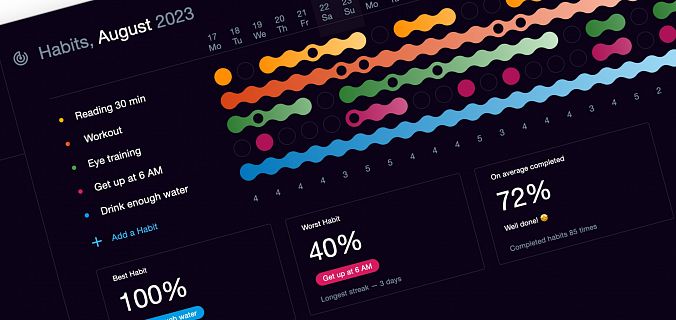How to achieve this? There is an opinion that to build a habit, you should repeat it for 21 days in a row. We don’t know for sure whether it’s true or not. But we do know that it’s easy to make something useful every day with our new habit tracker in SingularityApp, which was awaited by many users.
Why habits are hard
Habits make our lives consistent and therefore better. They make us feel more productive, motivated and cool — just because we perform some kind of ritual on a daily basis.

But it only seems simple. In fact, we often sabotage the habit-forming process as soon as we start it.
The first day is easy. You are full of enthusiasm, following your goal. You drink a glass of water with lemon in the morning, joyfully do yoga at dawn and read a book in the evening.
On the second day, you suddenly feel like saying to hell with yoga, it would be better to sleep an extra half an hour, like you used to. Lemon is sour. The book, you read before going to bed, is tedious, you’d rather watch YouTube. On the third day, fiasco comes. You are screwed: you no longer remember why you wanted to do yoga, drink water and read this book. You say to hell with all of these, you feel like a weak-willed jerk, so you stop trying.
It’s necessary to keep track of the progress of your habit to keep your enthusiasm up. You can get a paper calendar and mark the days in it. That’s okay, but then you’ll always have to keep it in sight and remember to make notes. Yes, you can create a daily recurring task in your planner: you just check it off every night and praise yourself for it. Or you can use a tracker that not only shows your progress (or failure sometimes), but also counts statistics and motivates you not to skip a single day. Such as our new habit tracker in SingularityApp.
Where to look for the habit tracker in the SingularityApp and how it works
Find it in the web and desktop versions. It will be available in the app a bit later. The Tracker icon settled in the upper toolbar on the right. A click on it takes you to a special section.
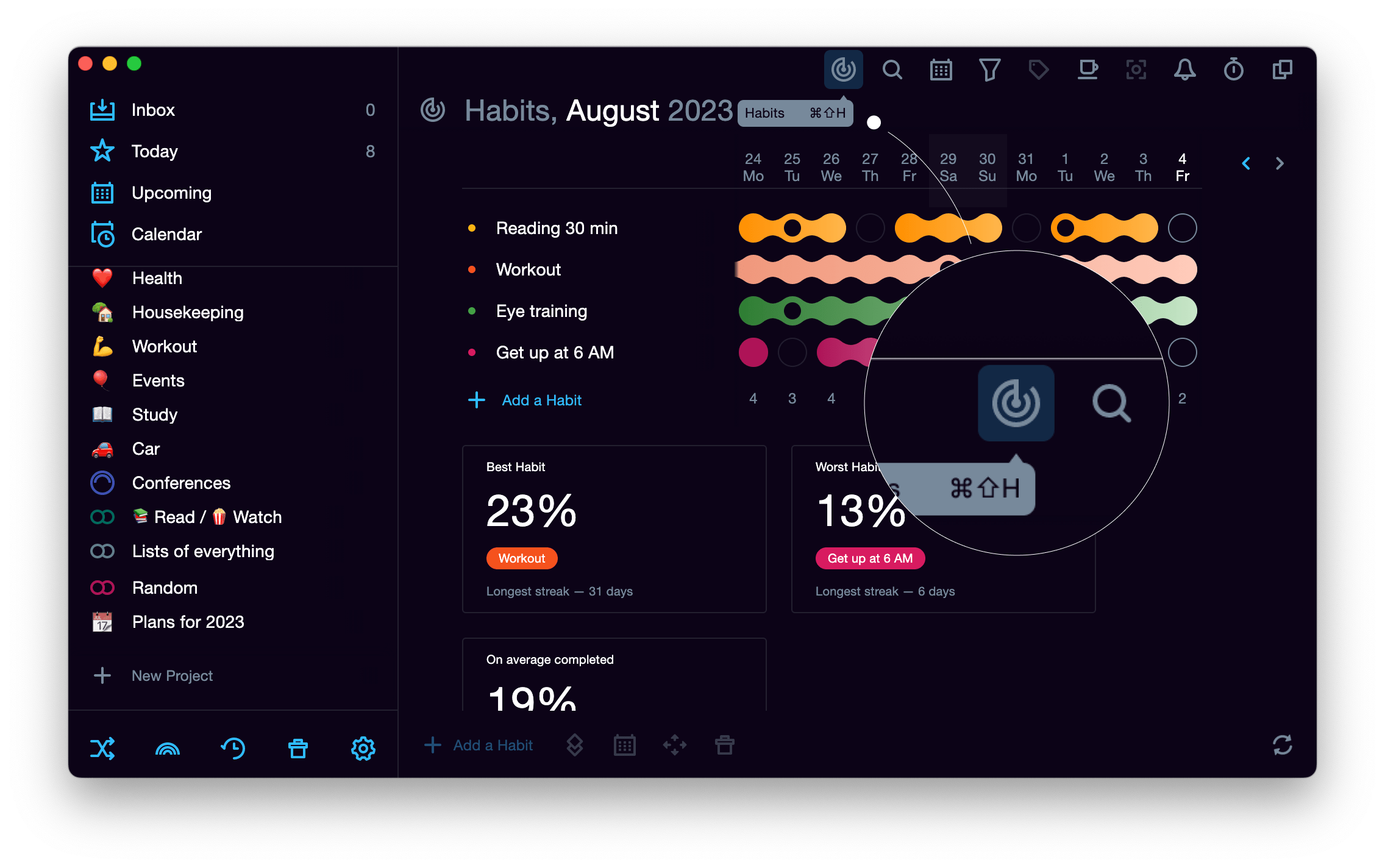
Just click on the "Add habit" button, write its name and select a color in the pane on the right: habit is done. In the pane on the right, you can add a description of the habit and adjust the days of its performance. You can also check the statistics: what the maximum chain was (number of days without skipping) and how many days in total you’ve been performing the habit.
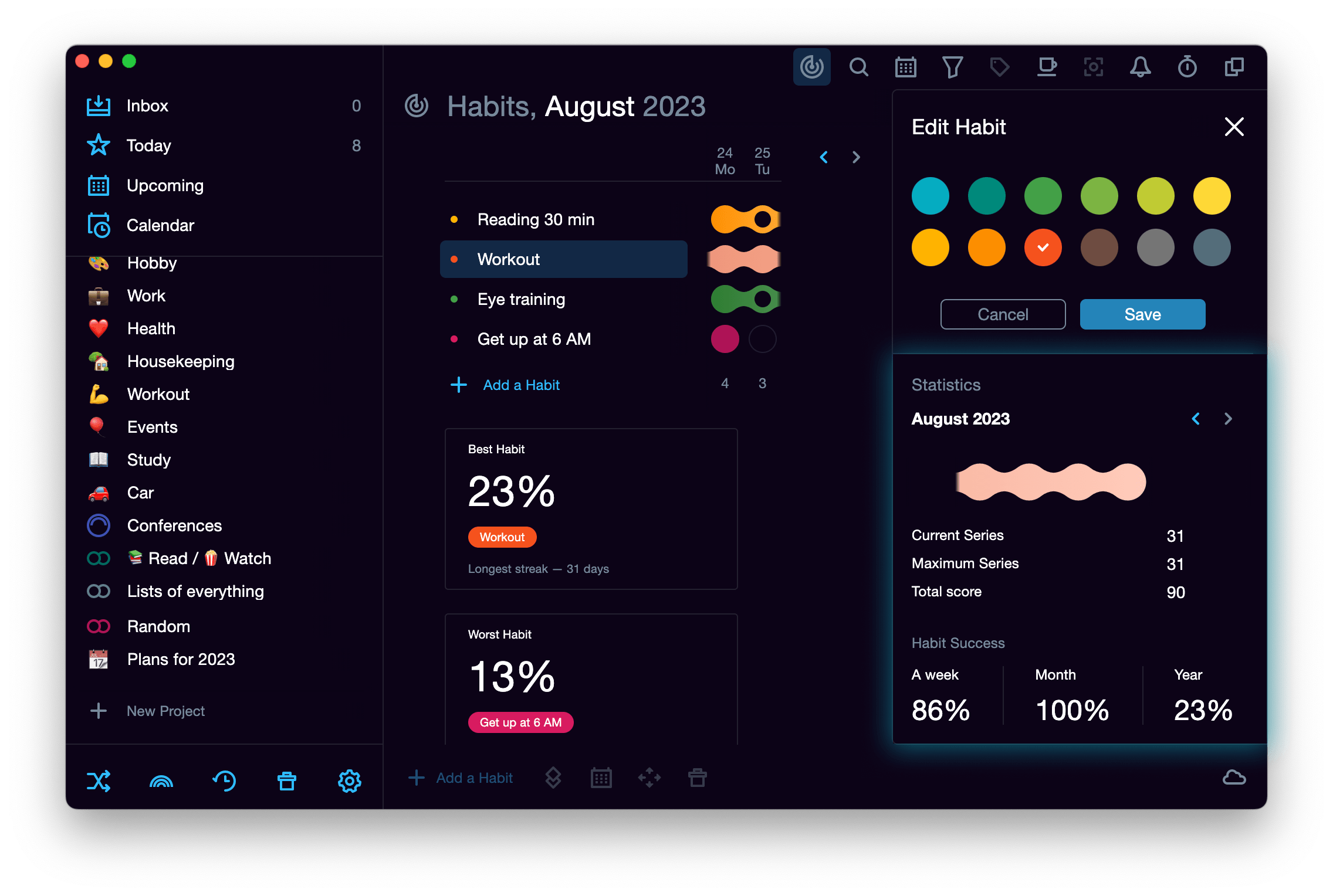
The longer the chain, the more successful your habit. At the bottom of the section, there are general statistics: here you can see the average percentage of completion of all your habits, as well as the best habit (with a minimum of skips) and the worst — the one with the least number of successful chains.
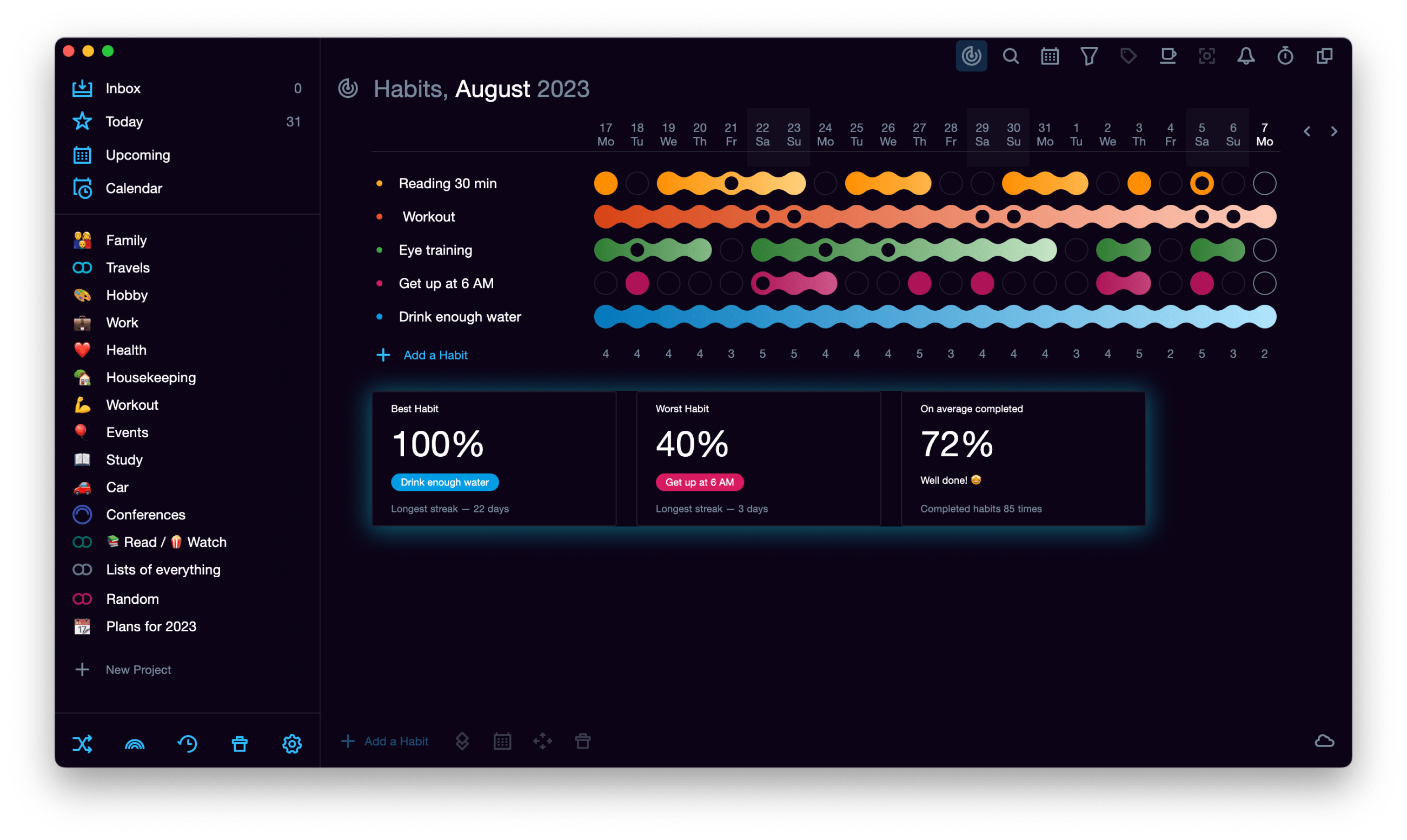
To avoid breaking the chain, there’s a trick — you can pause the habit for a while. Double-click on the disk: a colorful circle will appear instead of the colored fragment. So you’ll know, you don’t do morning yoga on Tuesday and Friday. Or on Saturdays, you put off reading to spend time with your family. Or you just got lazy on Wednesday and didn’t watch all the usefulness in the video that you had planned.
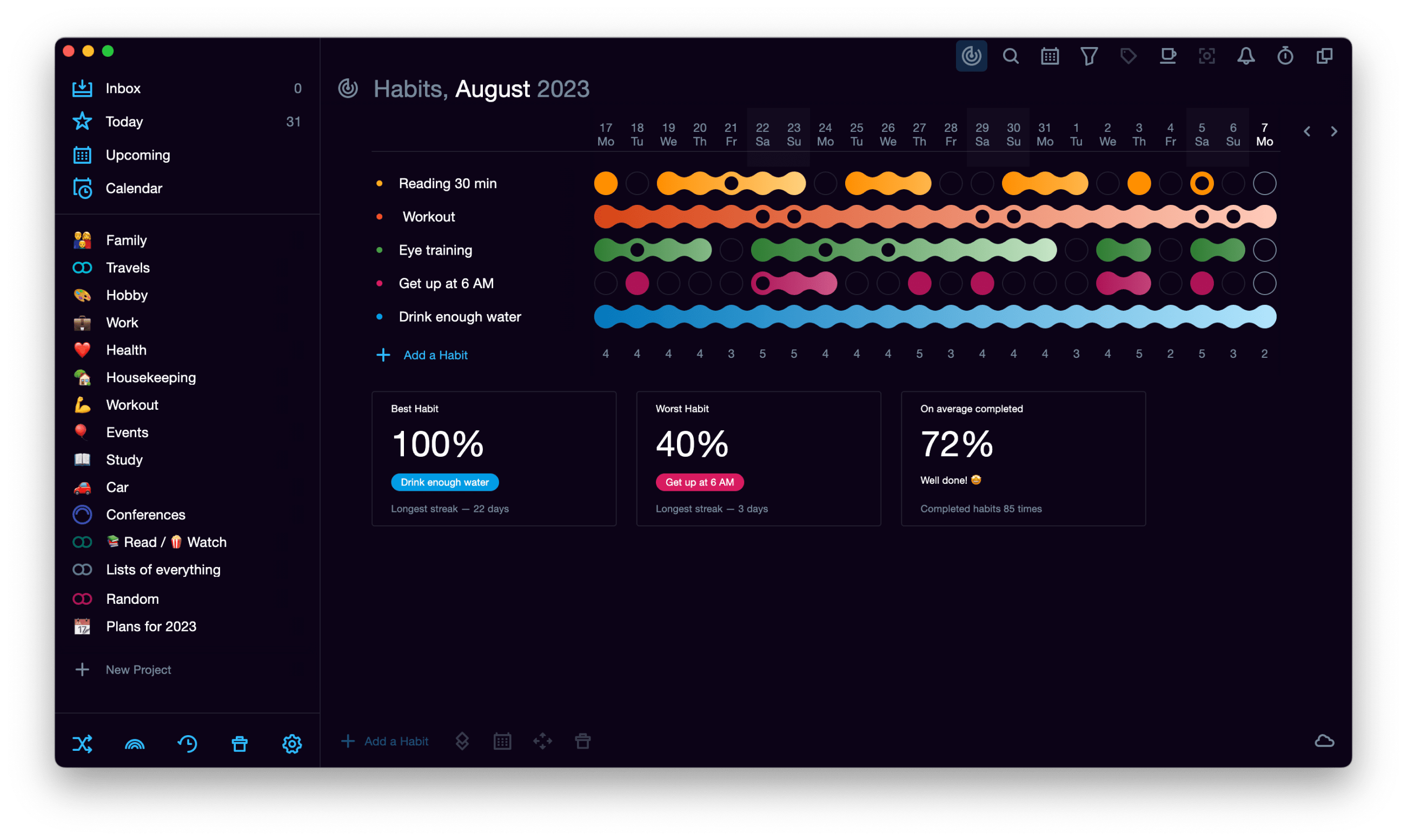
The habits in the general list can be sorted simply by Drag’n’Drop. The ones that bore you can be deleted irretrievably.
But if you care about your progress, or you just want to put the habit on hold for a long time (like going on vacation), send it to the archive. In the archive, you can always view the details of the habit in the window on the right by clicking on it. When you need the habit returned, you can always restore it with all the progress and statistics. And start practicing it again :)
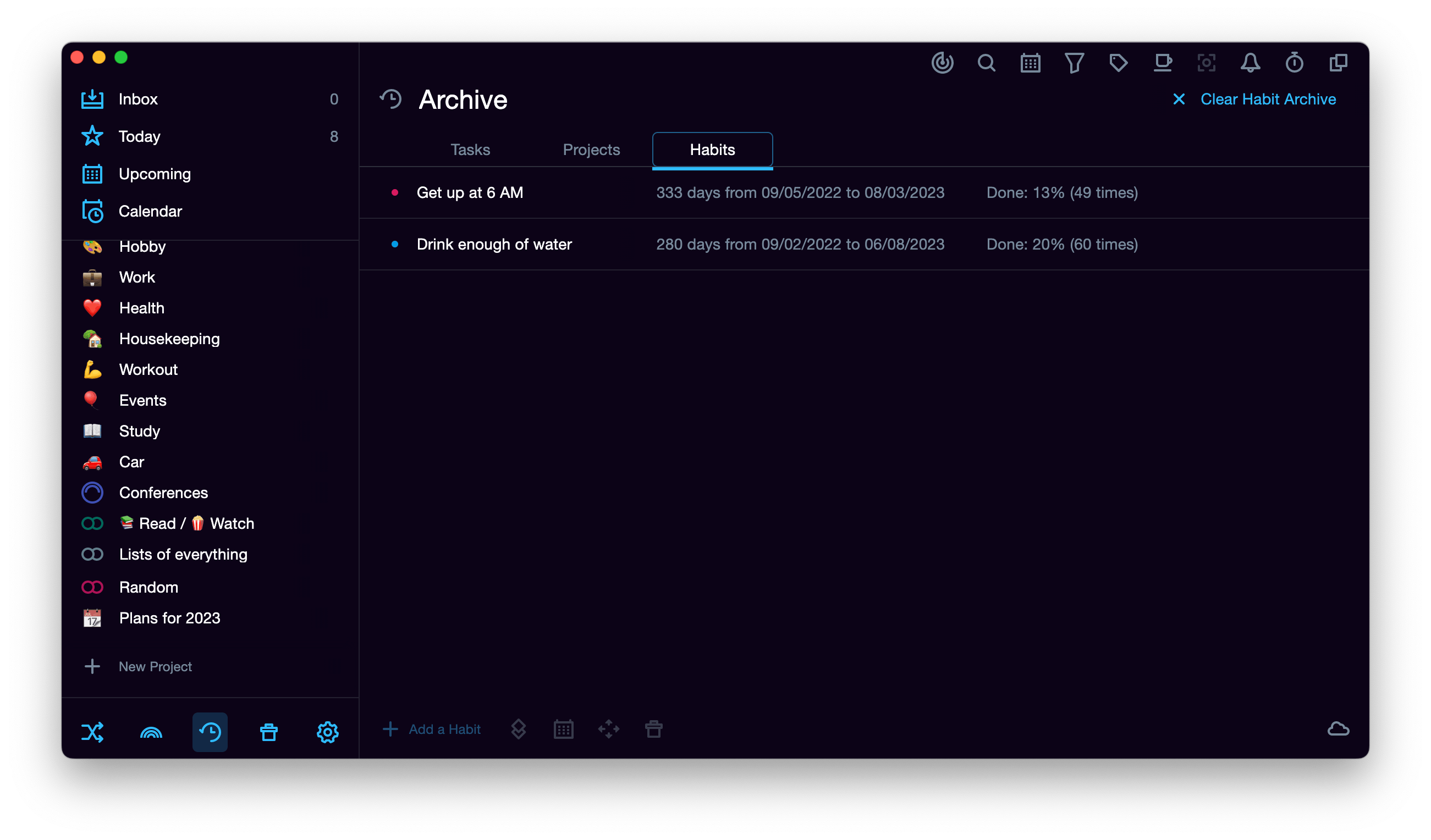
Why a habit tracker is awesome
-
It's simple
No repetitive and endlessly multiplying tasks. No reminders (but you can use them if necessary). No complicated scenarios to track a habit. You just make a mark in the tracker every day and thereby build an unbreakable chain. And that's all you need to get to the goal. -
It fuels the brain with dopamine
Our brain lovestreatsrewards, just like a well-trained dog. The progress makes us happy and motivates us to go on. It's like video games: you want to keep going with each new level, so you don't lose what you've achieved. Just by turning your daily routine into a colorful chain in the tracker, you get used to doing it on a regular basis, and at the same time you get a dopamine burst because you're doing great. -
Progress is evident
Repetitive tasks are imperceptible anywhere except the calendar. Of course, they will never let you forget to read for 30 minutes every day before going to bed, because they're always on your to-do list. But the repetitive tasks deprive you of the opportunity to analyze your progress: how long you've been following this habit, which days you've done it, and which days you haven't. The tracker makes everything clear: you either did something, or you didn't. -
It helps you focus on "today"
Even if all the other things go down the drain, you’ll have something unchangeable: one-three habits done that will definitely make your day better. Habits also make it easier to feel the power of small steps: instead of the overwhelming task of "learning Chinese," you’ll be on your way to your goal with the easy habit of "5 new words a day". -
It multiplies the effect
The longer and the more regularly you do something, the easier and faster it becomes for you. And sometimes, it even helps you get rich or get rid of bad habits: a daily $ 3 deposit or one more day without a cigarette — and in a year, you have extra $ 1,095 in your bank account and you feel free from addiction.
Which habits to cultivate and how many
There are three habits available on the Basic plan, while in the Pro-version, there is no limit on the number of habits. But it is difficult to inculcate more than five daily habits at once. It is better to work with habits gradually and develop them in groups of two-three pieces over a period of time. How long does it take? This question is open: some people believe in popular 21 days, others — in magic 66 days, someone needs three months to consolidate the result. The rules are up to you :)
Don’t rush to get rid of habits you’ve been working with for a long time. If they are important on a regular basis and you like them — leave them on the list so you can continue to enjoy doing them after 21 days and after 3 months, and after a year.
Keep doing yoga in the morning, going to the gym, saving money, reading books and doing other useful things.
We recommend you to start from the global goals to understand which habits are worth implementing. For example, if you want to lose weight, you can add the following habits:
- Not to eat junk food;
- Drink two liters of water a day;
- Take the proverbial 10,000 steps every day.
If you want to become an expert in a particular area, you can cultivate a 30-minute daily practice in that sphere as a habit. If you want to accomplish more, you can set a goal of doing five tasks a day using Pomodoro Technique, don’t get distracted by social media and keep track of these tasks with our habit tracker.
Do you like the idea of habits? Hurry up to try them out in SingularityApp! Catch up on new releases :)

